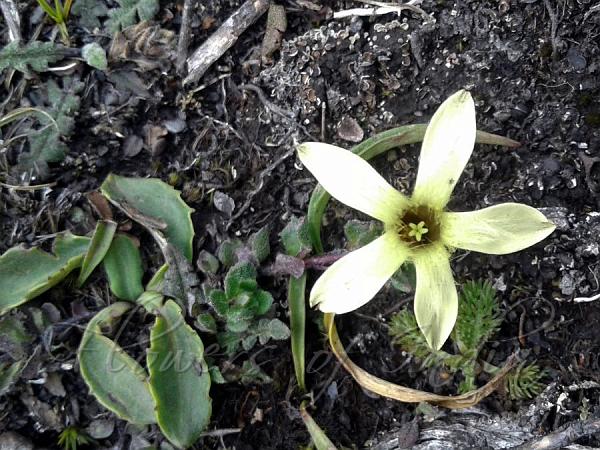|
| Yellow Trailing Bellflower |
|

|

|
|
|
|
Photo: |
Botanical name: Cyananthus flavus Family: Campanulaceae (Bell flower family)
Synonyms: Cyananthus flavus subsp. flavus
Synonyms: Cyananthus flavus subsp. flavus
Yellow Trailing Bellflower is a Himalayan
wildflower, with flowers various light shades of yellow or white.
Flowers are borne singly at branch-ends, subtended by a whorl-like
aggregation of 4 or 5 leaves. Flower-stalks are 1-2 cm, usually
hairless, rarely sparsely hairy. Calyx is hairless, except yellow hairy
inside sepals; tube broadly cylindrical, 8-12 mm, base rounded or flat,
enlarging in fruit. Sepals are triangular, 3-4 x about 3 mm. Flower are
2.5-3 cm, outside hairless, inside densely white- or yellow hairy at
throat. Petals are obovate-oblong or obovate-elliptic, 14-16 x 5-7 mm,
tip often very sparsely brown hairy. It is a plant with roots
carrot-shaped, up to 5 mm in diameter. Caudexes robust, multibranched,
covered with persistent scales toward tip; scales ovate, about 3 × 1
mm. Stems are ascending, 5.5-16 cm, simple or with short branches,
densely white hairy to nearly hairless. Leaves are alternate, gradually
increasing in size toward tip, stalkless or nearly so; blade elliptic,
obovate-lanceshaped, or broadly ovate, 5-16 × 3-8 mm, both surfaces
gray-white hairy or hairless, base wedge-shaped, margin entire or
sometimes slightly wavy, slightly recurved, tip pointed, blunt, or
rounded. Capsules are nearly equal to calyx in length; style exceeding
flower tube. Yellow Trailing Bellflower is found in Eastern Himalayas,
in Arunachal Pradesh and Yunnan, China, at altitudes of 2700-3600 m.
Flowering: July-August.
| Identification credit: Tabish | Photographed in Arunachal Pradesh. |
• Is this flower misidentified? If yes,